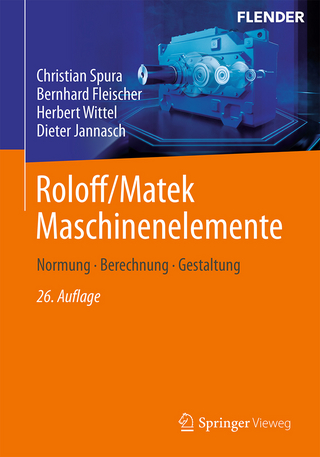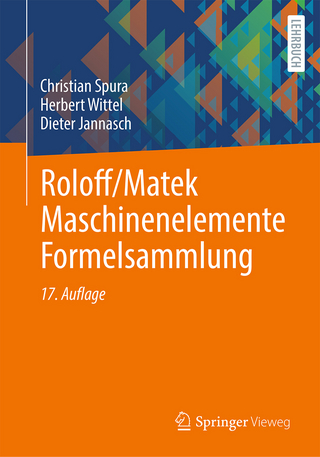
Quantitative x-Ray Diffractometry
Springer-Verlag New York Inc.
978-0-387-94541-5 (ISBN)
- Titel ist leider vergriffen;
keine Neuauflage - Artikel merken
One of the most important techniques for determining the atomic structure of a material is X-ray diffraction. One of the great problems of the technique, however, is the fact that only the intensity of the diffraction pattern can be measured, not its phase. The inverse problem, of determining the structure from the pattern thus contains ambiguities that must be resolved by other means. Quantitative X-ray analysis provides one way to resolve this phase problem: mixing the material in question with a material of known structure yields interferences that can be analyzed to yield the unknown phases. Invented in 1916, but little used at the time, the technique has seen a recent revival due to the development of extremely precise X-ray diffractometers coupled with powerful computers.
1 Introduction.- 1.1 Phase analysis-when and why.- 1.2 Phase analysis as an analytical method.- 1.2.1 Direct methods of phase analysis.- 1.2.2 Indirect methods of phase analysis.- 1.2.3 General approach to phase quantification.- 1.3 History of quantitative X-ray phase analysis.- 1.3.1 Quantification techniques.- 1.3.2 Instrumentation.- 2 Physical basis.- 2.1 Interaction of X-rays with material.- 2.1.1 Scattering of X-rays.- 2.1.2 Absorption of X-rays.- 2.1.3 Various forms of absorption coefficients.- 2.2 Intensity in powder diffraction.- 2.2.1 General expression derived from the kinematic theory of diffraction.- 2.2.2 Polarization factor in X-ray diffractometry.- 2.2.3 Extinction of X-rays.- 2.3 Background-angle variation and intensity.- 2.3.1 Introduction.- 2.3.2 Scattering of continuous radiation.- 2.3.3 Scattering of characteristic radiation.- 2.4 X-ray diffraction by nonhomogeneous polycrystalline materials.- 2.4.1 Introduction.- 2.4.2 Two extreme cases: homogeneous and nonhomogeneous specimens.- 2.4.3 Particle absorption factor.- 2.4.4 Absorption by a nonhomogeneous system.- 2.4.5 Intensity correction for nonhomogeneous specimens.- 2.4.6 Application of the theory.- 2.4.7 Surface roughness.- 2.5 Orientation of reflecting particles.- 3 Geometric aspects of X-ray diffractometry.- 3.1 Geometric schemes in X-ray diffractometry.- 3.2 Diffractometers with Bragg-Brentano reflection focusing.- 3.2.1 General geometric features.- 3.2.2 Absorption correction.- 3.2.3 Real irradiated volume in the Bragg-Brentano scheme.- 3.2.4 Instrumental aberrations.- 3.2.5 Diffraction by a thin-layer specimen.- 3.3 Diffractometers with Seeman-Bohlin reflection focusing.- 3.3.1 Absorption correction.- 3.3.2 Instrumental aberrations.- 3.3.3 Comparison with the Bragg-Brentano scheme.- 3.4 Transmission technique with constant specimen-detector distance (Bragg-Brentano transmission analog).- 3.4.1 Geometric scheme.- 3.4.2 Absorption correction.- 3.4.3 Instrumental aberrations.- 3.4.4 Comparison between reflection and transmission Bragg-Brentano geometries.- 3.5 Transmission technique with an invariant focusing circle (Guinier diffractometer or the Seeman-Bohlin transmission analog).- 3.5.1 General description.- 3.5.2 Absorption correction.- 3.5.3 Chromatic aberration.- 3.5.4 Comparison of symmetric and asymmetric transmission geometries.- 3.6 Debye-Sherrer geometry.- 3.6.1 General view.- 3.6.2 Absorption correction.- 3.6.3 Comparison with former methods.- 3.7 Powder diffractometry with synchrotron radiation.- 3.7.1 General description.- 3.7.2 Instrumental aberrations.- 3.7.3 Diffractometric modes with synchrotron radiation.- 3.8 Position-sensitive detectors in powder diffractometry.- 4 Methodology of quantitative phase analysis.- 4.1 Introduction.- 4.2 Analysis of samples with a known mass absorption coefficient (diffraction-absorption technique).- 4.2.1 Multiphase system with a constant absorption coefficient.- 4.2.2 Two-phase system with a variable absorption coefficient.- 4.2.3 General case: multiphase systems with a variable absorption coefficient.- 4.2.4 Examples.- 4.3 Internal standard method.- 4.3.1 Basic principles.- 4.3.2 Evaluation of calibration constants.- 4.3.3 Precision of the internal standard method.- 4.3.4 Comparison of the internal standard method with the diffraction-absorption technique.- 4.3.5 Internal standard-materials and optimal amount.- 4.3.6 Application of the internal standard method.- 4.4 Doping method in quantitative X-ray diffractometry.- 4.4.1 Introduction.- 4.4.2 Constant absorption approach.- 4.4.3 General case.- 4.4.4 Two-phase approach.- 4.4.5 Precision of the analysis and optimal doping.- 4.4.6 Implementation of the doping method.- 4.5 Dilution Method.- 4.5.1 Basic aspects.- 4.5.2 Optimal dilution.- 4.5.3 Potential diluents.- 4.5.4 Use of a heavy absorber-constant-absorption approach.- 4.5.5 Implementation of the dilution method.- 4.6 Full-phase analysis of the n-phase sample.- 4.6.1 Basic equations.- 4.6.2 Application of the method to two-phase mixtures.- 4.6.3 Evaluation of the calibration coefficient ?rj.- 4.6.4 Presence of undetected phases in the analytical sample.- 4.6.5 Comparison of equations (4.62) and (4.77).- 4.6.6 Precision of the analysis.- 4.6.7 Invariance of ?rj values.- 4.6.8 Examples.- 4.7 Reference intensity ratios in quantitative analysis.- 4.7.1 Introduction.- 4.7.2 Definition and acquisition of reference intensity ratios.- 4.7.3 Implementation of reference intensity ratios.- 4.7.4 Invariance of reference intensity ratios.- 4.8 Diffraction patterns with overlapping peaks-full diffraction pattern approach.- 4.8.1 Introduction.- 4.8.2 Basic principles.- 4.8.3 Evaluation of phase abundances.- 4.8.4 Evaluation of the constants ?ij.- 4.8.5 Precision of the analysis.- 4.8.6 Internal standard technique in the case of overlapping peaks.- 4.8.7 Continuous pattern approach.- 4.8.8 Examples.- 4.9 Implementation of calculated powder patterns in QXRD.- 4.9.1 Introduction.- 4.9.2 Calculation of calibration constants.- 4.9.3 Full-pattern approach.- 4.9.4 Simultaneous QXRD and structure refinement by the pattern-fitting method.- 4.9.5 Sources of structural data.- 4.9.6 Quality of structural data.- 4.9.7 Comparison of calculated and experimental powder data.- 4.9.8 Summary.- 4.10 Standardless Methods.- 4.10.1 Introduction.- 4.10.2 Derivation of phase abundances and calibration constants.- 4.10.3 Full pattern approach.- 4.10.4 Number of phases in analyzed samples.- 4.10.5 Precision of the standardless techniques-optimal sample set.- 4.11 Combination of X-ray diffraction and chemical data.- 4.11.1 Phase analysis based on pure chemical data.- 4.11.2 Auxiliary X-ray diffraction data.- 4.11.3 Basic application of X-ray diffraction.- 4.12 Crystallinity of polymers.- 4.13 Analysis of low-mass samples.- 4.13.1 Critical sample masses.- 4.13.2 Analytical equations.- 4.13.3 Analytical techniques.- 5 Practical aspects of quantitative phase analysis.- 5.1 Introduction.- 5.2 Instrumentation.- 5.2.1 Introduction to instrumentation.- 5.2.2 Geometric alignment of the diffractometer.- 5.2.3 Geometric aberrations.- 5.2.4 Variable instrument parameters.- 5.2.5 Detectors and monochromators.- 5.2.6 Fixed divergence versus fixed irradiated area geometries.- 5.3 Specimen preparation.- 5.3.1 Preparation of bulk specimens.- 5.3.2 Sampling of powders.- 5.3.3 Fine grinding of powders.- 5.3.4 Powder aggregation and mixing.- 5.3.5 Powder mounts.- 5.3.6 Pressing.- 5.3.7 Dusting of loose powder on a plate.- 5.3.8 Powder deposition on a membrane filter.- 5.3.9 Preparation of oriented mounts.- 5.3.10 Handling of reactive samples.- 5.3.11 Handling of low-mass samples.- 5.4 Analytical standards.- 5.4.1 Effects of solid solution on diffracted intensity.- 5.4.2 Linear and planar structural imperfections.- 5.4.3 Particle morphology.- 5.4.4 Selection of analytical standards.- 5.5 Intensity measurements.- 5.5.1 Counting statistics.- 5.5.2 Difference and sum of intensities-counting strategy.- 5.5.3 Ratio of intensities.- 5.6 Definition and subtraction of background.- 5.6.1 Definition and subtraction of the background for a single diffraction peak.- 5.6.2 Full-pattern approach.- 5.6.3 Subtraction of incoherent scattering.- 5.7 Determination of sample absorption.- 5.7.1 Calculation of mass absorption.- 5.7.2 Measurements of absorption coefficients by transmission methods.- 5.7.3 Attenuation of reflection from a crystalline substrate.- 5.7.4 Determination of the absorption coefficient by diffraction techniques.- 5.7.5 Determination of the mass absorption coefficient by means of Compton scattering.- 5.8 Pattern decomposition and simulation.- 5.8.1 Introduction.- 5.8.2 Profile-fitting functions.- 5.8.3 Fitting of asymmetrical profiles.- 5.8.4 Adjustable parameters and constraints.- 5.8.5 Number of separated peaks and angular resolution.- 5.9 Methodology of corrections for preferred orientation.- 5.9.1 Introduction.- 5.9.2 Presentation of the pole distribution.- 5.9.3 Orientation distribution function.- 5.9.4 Determination of the orientation distribution function W(?, ?).- 5.9.5 Crystallite orientation distribution-the general case of axial texture.- 5.9.6 Approximation of the orientation distribution function W(?,?).- 5.9.7 W(?) of diffraction peaks not dependent on preferred orientation.- 5.10 Estimation of analysis errors.- 5.10.1 Introduction.- 5.10.2 Calculation of reproducibility.- 5.10.3 Scattering range of results.- 5.10.4 Comparison of observed and known phase abundances.- 5.10.5 Inter- and intralaboratory precision.- 5.10.6 Parameters of the calibration graph-estimation of standard deviation.- 5.11 Detection limit.- 5.11.1 Basic formulation.- 5.11.2 Reduction of the detection limit.- 5.11.3 Detection limit in the sample mass approach.- 5.12 Crystallite statistics.- 5.12.1 Intensity error.- 5.12.2 Methods of decreasing intensity fluctuations other than sample diminution.- 6 Industrial applications.- 6.1 Ceramics and glass ceramics.- 6.2 Naturally occurring (geologic) samples.- 6.2.1 Modal analysis of geologic samples.- 6.2.2 Analysis of bauxites.- 6.2.3 Mineralogical analysis of coal and coal ash.- 6.3 Analysis of Portland cement.- 6.4 Metallurgy.- 6.5 Thin films and coatings.- 6.6 Air pollution (aerosols and airborne dusts).- 6.7 Pharmaceuticals.- References.
| Erscheint lt. Verlag | 6.12.1995 |
|---|---|
| Zusatzinfo | biography |
| Verlagsort | New York, NY |
| Sprache | englisch |
| Gewicht | 740 g |
| Einbandart | gebunden |
| Themenwelt | Naturwissenschaften |
| Technik ► Maschinenbau | |
| ISBN-10 | 0-387-94541-5 / 0387945415 |
| ISBN-13 | 978-0-387-94541-5 / 9780387945415 |
| Zustand | Neuware |
| Informationen gemäß Produktsicherheitsverordnung (GPSR) | |
| Haben Sie eine Frage zum Produkt? |
aus dem Bereich


